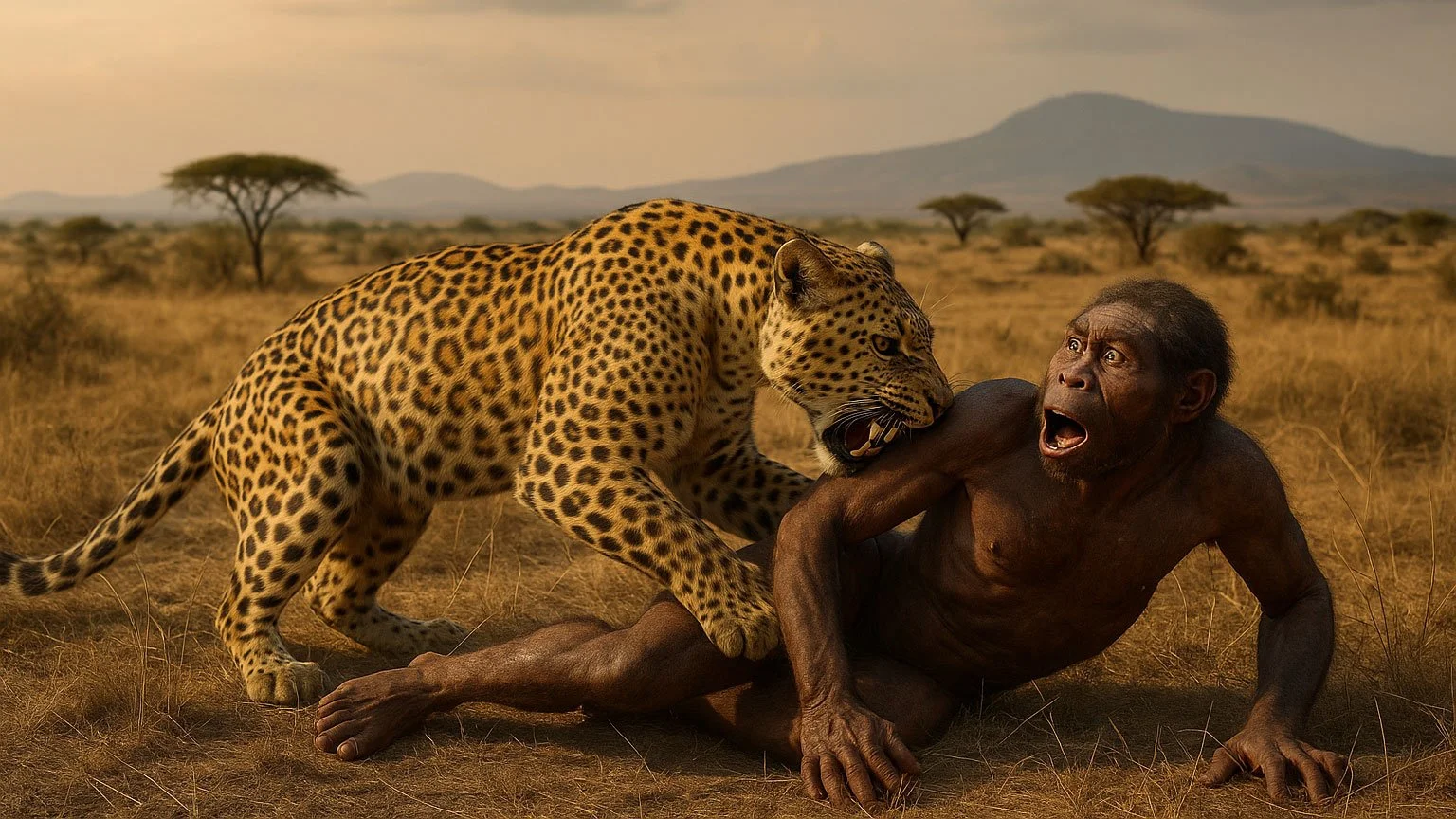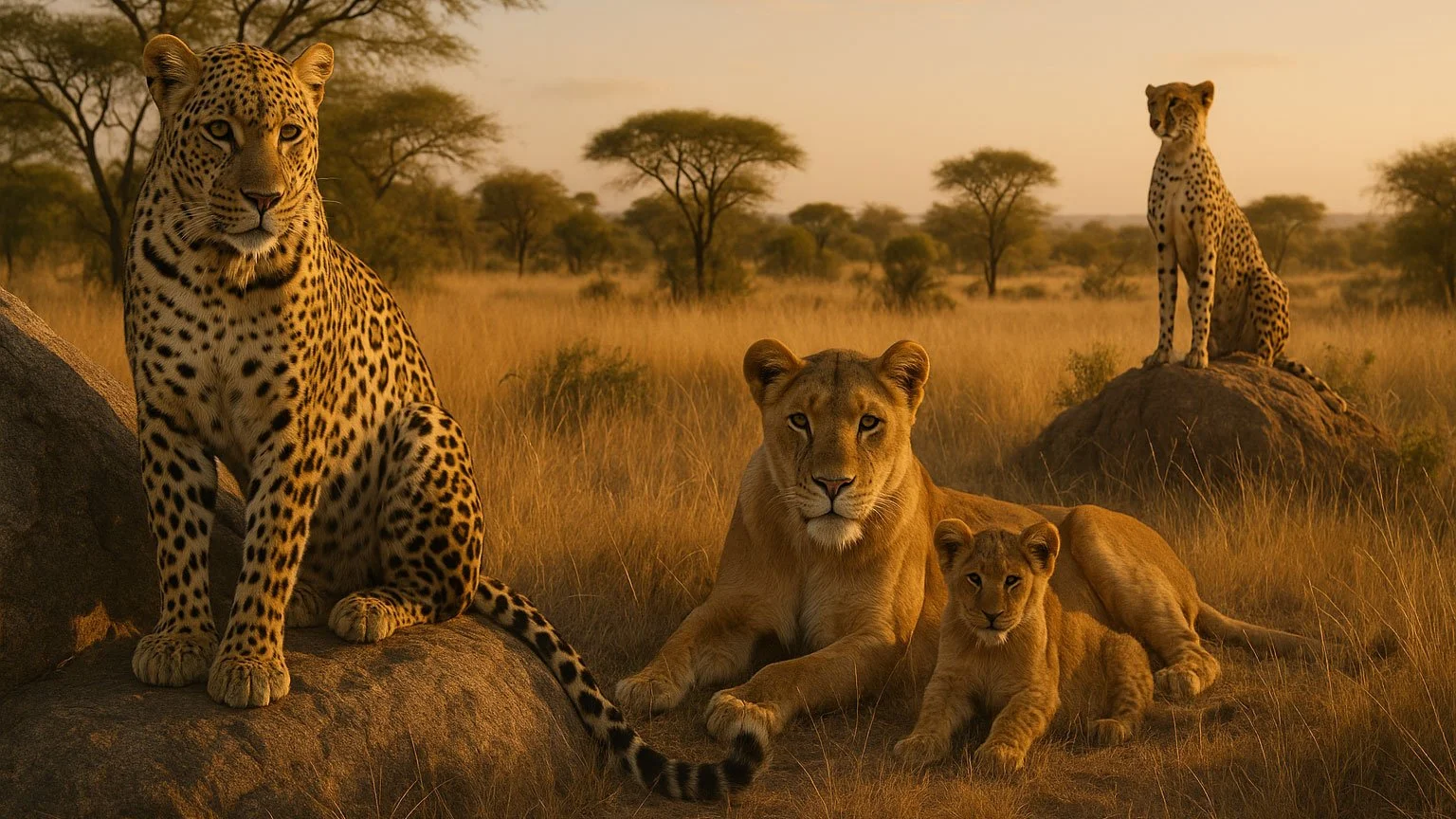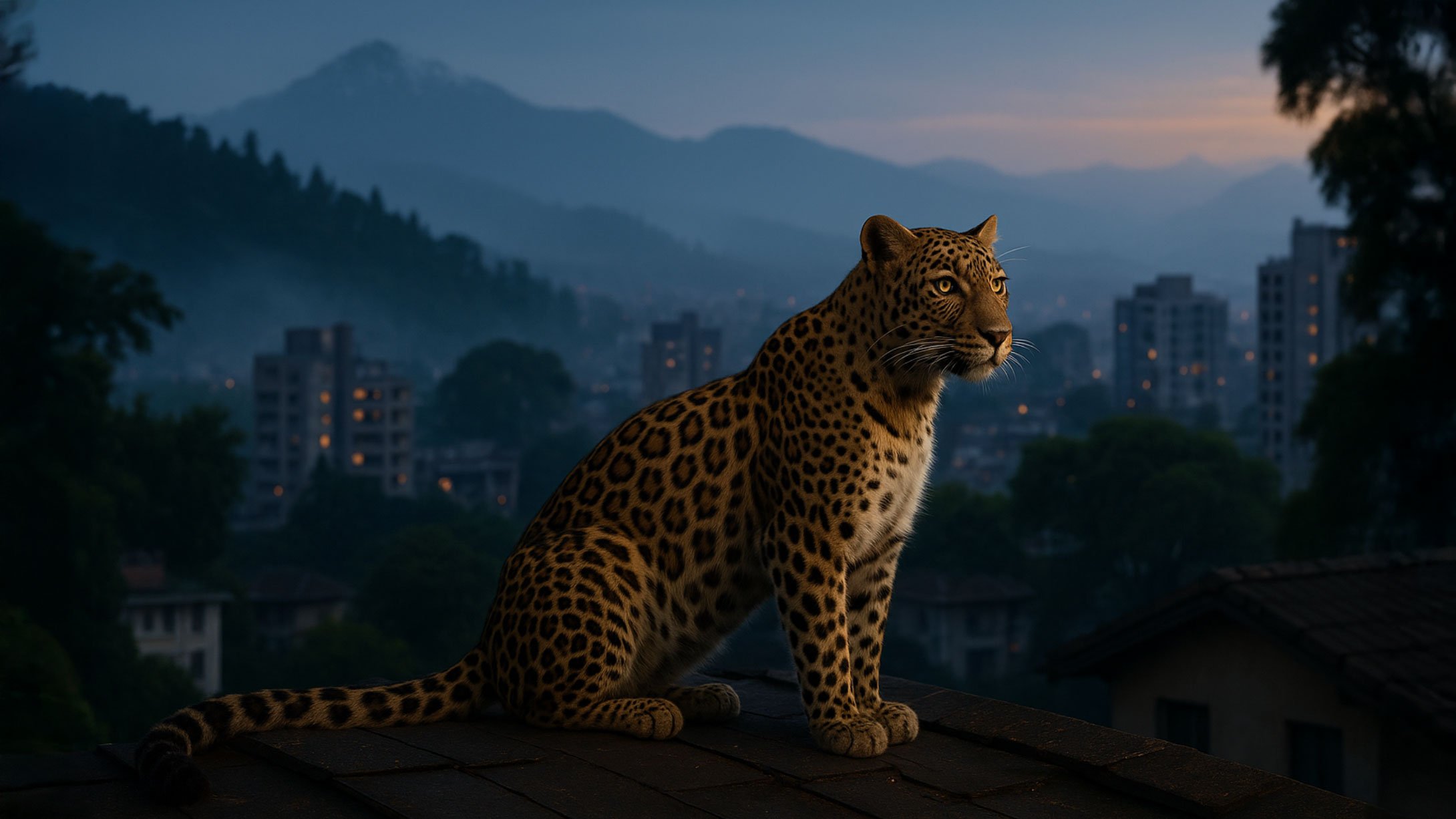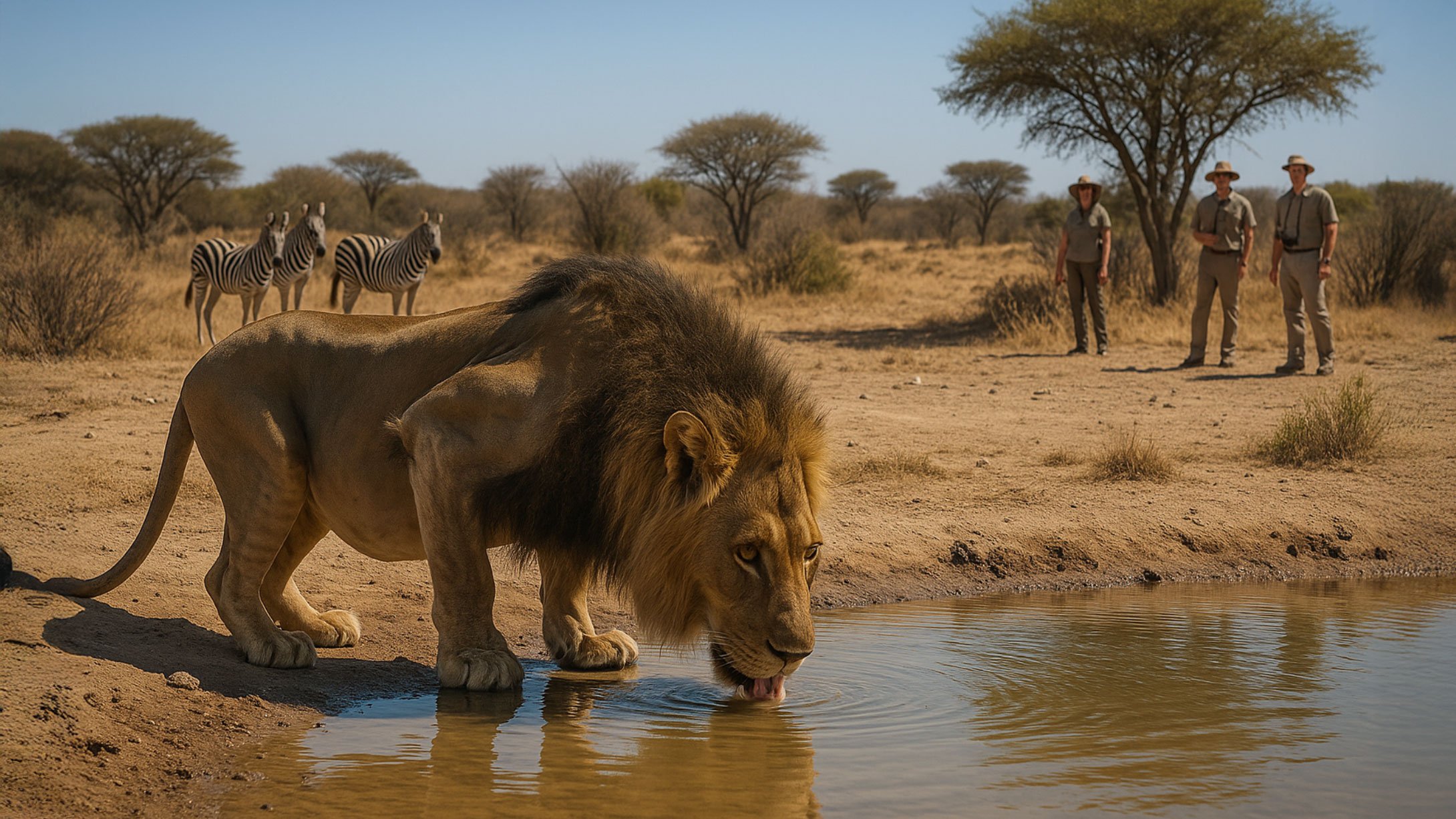Dethroned at Dusk: When Leopards Hunted Our First “Humans”
At dusk in Olduvai, the wind still carries the smell of sun-warmed grass and the iron tang of life and death. Imagine a small figure—broad-browed, clever fingers dusted with ocher—freezing at the rustle of grass. The cat has already seen him. Spots dissolve into shadow, paws leave no sound, and the first true “human” learns what countless antelope already know: the leopard is the night’s law.
For years, we’ve told a braver story: that Homo habilis, our nimble, tool-making ancestor of East Africa, muscled its way to the top of the food chain nearly two million years ago—brandishing Oldowan stone flakes, fending off big cats, and stealing their kills. But new analysis has tugged that crown off habilis’ head. By re-examining two H. habilis fossils from Olduvai—including the 1.85-million-year-old holotype that defines the species—researchers used AI to identify the tooth marks on the bones. The pattern wasn’t hyena scavenging. With >90% probability, the bites match leopards. In other words, these individuals weren’t just competing with big cats—they were eaten by them. The authors call it a “dethroning.”
That single, startling correction reshapes the way we picture the origin story of “us.” H. habilis, long credited with the earliest stone toolkit, likely wasn’t the swaggering apex scavenger we imagined. If anything, habilis was still a creature that listened for purrs in the dark and carried scars from claws it couldn’t see. The study argues that the first hominin to truly flip the script—able to guard carcasses, repel predators, and consistently benefit from meat—was probably Homo erectus, a more ground-adapted contemporary with longer strides and perhaps steadier nerves.
Why does this matter to big-cat conservation in 2025?
Because it reminds us that predators aren’t just “out there” competing with us; they shaped us. The leopard’s stealth, power, and patience were part of the crucible that forged human cooperation and vigilance. Our ancestors learned to cluster near fire, to read the grass, to share watch in the dark. Even our earliest tools were likely honed under the pressure of cat eyes glinting from the bushes. Top predators weren’t simply rivals; they were the architects of our caution, our ingenuity—and eventually our empathy for other lives navigating the same brutal balance.
In Olduvai, habilis may have scavenged when it could, learning to slice, scrape, and crack with stone. But the night still belonged to the leopard. That tension—the desire for meat and the dread of the watcher in the grass—feels familiar in a modern world that wants both comfort and wilderness. We crave safety, yet our health depends on ecosystems where fear still has a role. Predators thin the weak, keep herbivores moving, protect vegetation and watersheds, and ripple stability through the food web. Remove them, and the living fabric frays.
So when forests shrink and leopards vanish into traps and snares, we don’t just lose an animal; we lose a teacher that shaped our species. The study’s conclusion is humbling: H. habilis was more prey than predator. That humility is a gift. It reframes conservation not as charity, but as reciprocity. Big cats gave us the pressure that sparked our progress. Now it’s our turn to return the favor: to guard corridors where leopards still fade into dusk, to support science and coexistence tools in villages where livestock and livelihoods are at stake, and to replace myths of domination with stories of interdependence.
At Big Cat Rescue, our mission has evolved from caring for cats in cages to keeping wild cats wild—funding frontline projects, educating communities, and helping animal lovers turn concern into measurable action. The leopard’s shadow over Olduvai isn’t a tale of helplessness; it’s a reminder to keep apex predators on the land where they continue their ancient work of balancing life.
Picture the scene again. The cat glides forward. Habilis tenses. Two million years later, we finally understand: survival wasn’t about crushing the cat. It was about learning from it—and ensuring it still has a place to move, hunt, and vanish into gold grass at dusk.
Key takeaways from the new research
Two Homo habilis individuals from Olduvai Gorge—including the 1.85-million-year-old holotype—bear leopard tooth marks, identified via AI with >90% probability.
This challenges the narrative that H. habilis was the first apex scavenger/hunter; the more likely candidate is Homo erectus, better adapted to terrestrial life.
Implication: early “humans” were still prey—a humbling context that underscores the ecological and cultural importance of big cats.
A hopeful next step
Support organizations that protect corridors, reduce conflict, and keep leopards and other wild cats thriving—so future generations inherit ecosystems resilient enough to shape them, too. If this story moved you, join us at BigCatRescue.org to learn, share, and take practical actions where you live.
IFLScience summary of new research on Homo habilis fossils from Olduvai Gorge, AI-identified leopard tooth marks, and implications for early human trophic status and the likely primacy of Homo erectus. https://www.iflscience.com/the-first-humans-were-hunted-by-leopards-and-werent-the-apex-predators-we-thought-they-were-80849










